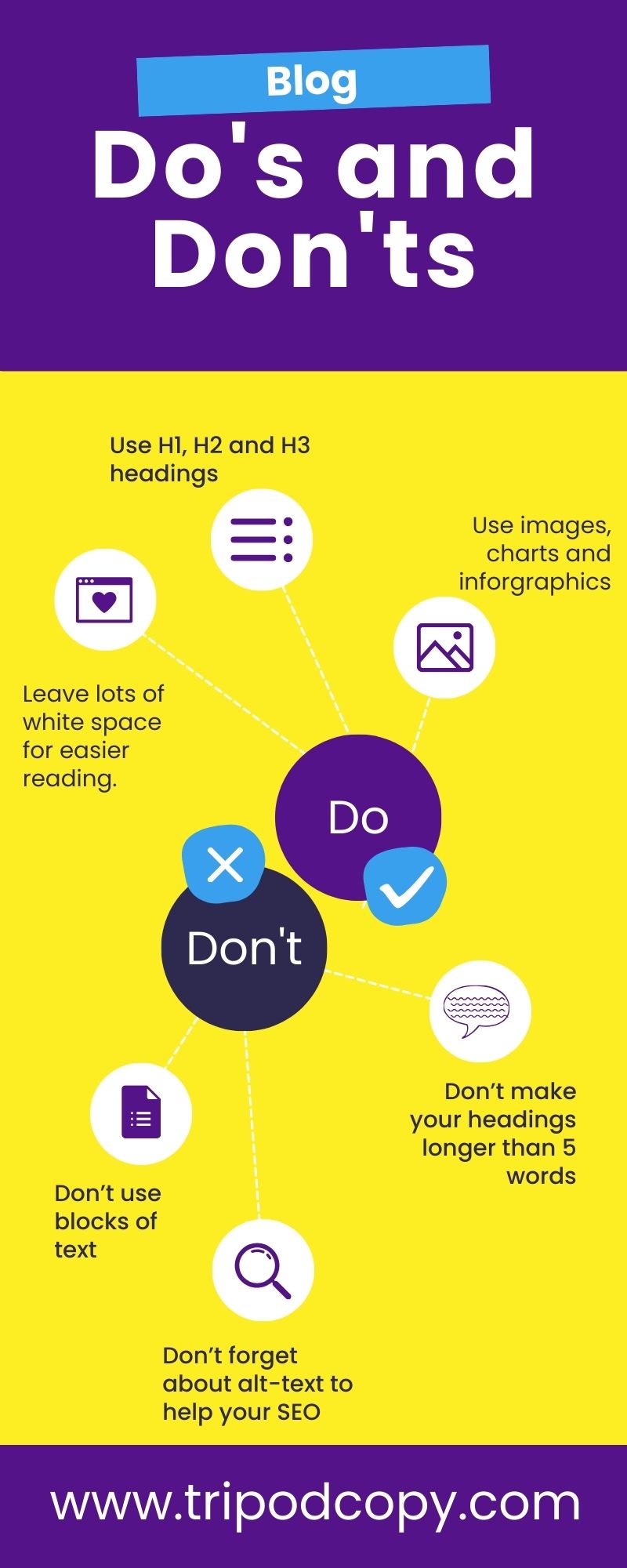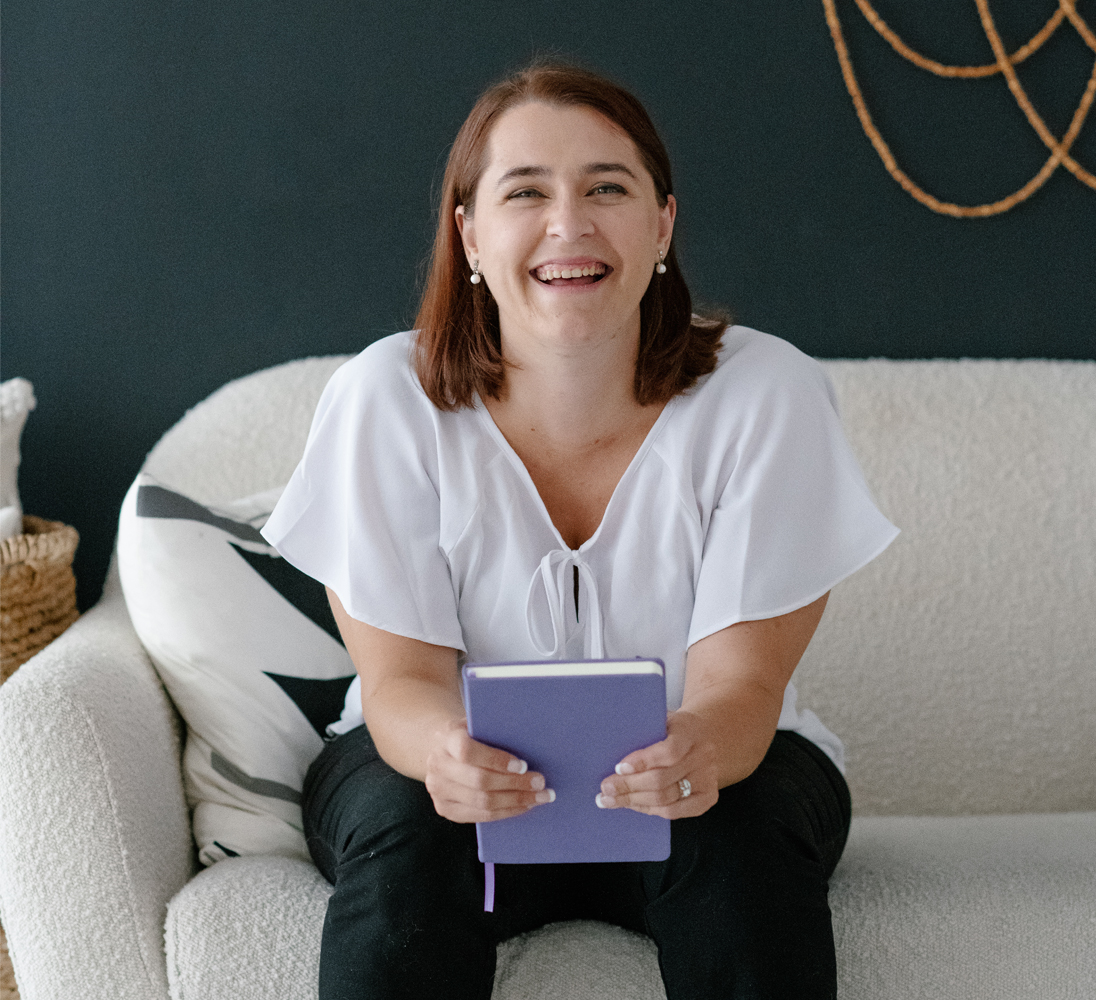The gist of it: Your blog structure is incredibly important – which includes how you arrange your text, how you write your content and how you use visuals.
As I am fond of telling people…blogs are my first love.
I write other stuff, emails, web copy, etc., but honestly….I LOVE LOVE LOVE writing blogs.
And I’m obviously going to be sharing all sorts of tips on how to write better blogs. How to make them more conversational and compelling and all that good stuff.
But today’s blog is not as much about the words. It’s about the structure and appearance. (If you’re not much of a reader – no judgment – just skim to the end, where there’s an infographic summing it all up!)
Better blog structure = more engagement
Let’s think about it this way. Why do fancy restaurants plate their food in a specific way? With the perfectly placed garnishes and the fancy drizzles?
Because we’re visual. We are visual creatures, so even if it’s the best food on the planet, it is that much better when it is also pretty.
Your blog is the same. I know you are smart and are going to write something amazingly valuable for your audience.
But it doesn’t just have to “taste” good. It’s got to look good too – you have to make smart choices about your blog structure. Because it’s going to help your reader really dive in. And when they do, your blogs will be doing what they should be doing: setting you up as an authority in your field and helping your audience get to know you!
So let’s talk about how to do that in three ways: your headings, your text and your visuals.
How should I write my blog headings?
The general rule is to have a heading (whether that’s an H2 heading or a H3 subheading) at least every 300 words. And it’s important to follow that hierarchy.
H1 – for your title
H2 – for your main headings
H3 – for your subheadings
H4, H5, H6 – if you need to go even further but honestly, at that point, it’s like a Russian doll of headings. You probably will never use these ones.
Our headings are like the signs on the highway. Imagine just driving. And driving. And driving. With only the road. You would have no sense of where you are, how far the nearest rest stop is and what attractions lie ahead. That’s boring, right?
Now when it comes to writing our headings, you want them to be long enough to capture what that section is about, but not so long that it’s actually a sentence. If you’re looking for a guideline, aim for 5 to 10 words.
The reality is that most people don’t read every single word on a page. We are more likely to skim, and then really dive in if something interests us.
So your heading should be something that is going to trigger your reader’s brain to think that they should read more carefully. How can you do that?
- Answer a question (e.g. “How should I write my blog headings?)
- Solve a problem (e.g. “Make your blog easier to read”)
- Make the benefit clear (e.g. “Better structure = more engagement”)
Make your blog easier to read
There are a few ways that you can make your blog easier to read. In another article, I’ll go into the actual words and using simpler language and all that good stuff.
But let’s talk about the aesthetics.
Look at this blog so far. How many sentences have I put in a paragraph? Two…maybe three?
This is where we need to unlearn some stuff that our English teachers taught us.
This is how I was taught to write in school. Writing a proper paragraph means having an introduction sentence that sets out what the blog will be about. Then, you want to have 2-3 sentences that will be the “meat” of what you’re saying. It will expand on your thoughts and this is where type-A students like me just put everything they knew in hopes of getting part marks. Finally, you’ll have a conclusion sentence that will either tie everything together or lead you into the next paragraph.
If you read that paragraph in its entirety, good for you. Generally speaking though, it’s not how we read online. It’s especially not how we read on our phones.
In online writing, white space is your friend. So limit your paragraphs to two to three sentences.
Other ways that you can make your writing easier to read:
- Bullets and lists: Just like our headings are sign posts, bullets and lists break up the monotony of a page
- Emphasis: Bolding or italicizing some text helps the main points jump off the page. (Use sparingly, otherwise it looks too chaotic.)
- Vary your sentence length: Generally speaking, you want to keep your sentences under 20 words. However, mix up short sentences and longer sentences to keep your audience engaged.
Finally, let’s talk about your visuals.
A picture IS worth 1000 words…so use them!
Again – we’re visual creatures, so make sure you include some visuals in your blog.
When choosing your visuals, your own pictures are best, especially if it relates to your area of expertise. If you’re a baker, for example, Google will give you more points for your picture of the cake you baked versus a stock image. It ties into their rating system of how much authority your site has – a topic for a future article. If you are using stock images, make sure they’re relevant to what you’re talking about.
Make sure you use high-quality images and that they’re not a massive file. This article is a really good resource on how to do that.
Does that necessarily mean that you should only use images?
No – visuals can be infographics (they’re my favourite – like the one below!) and charts. If you’re feeling up to it, it can even be a video.
The point is – get visual with it! And when you do – make sure you’re thinking about accessibility. That means GOOD alt-text that describes what your visual is all about.
Make the most out of your blogs with a better blog structure.
So let’s sum it up!

Writing blogs is a lot of work and I want you to get the most out of them!
So, pay attention to your blog structure. Use your headings wisely, make your text aesthetically pleasing and get those visuals going.
Want some help? Let’s have a chat! Book a call today!





